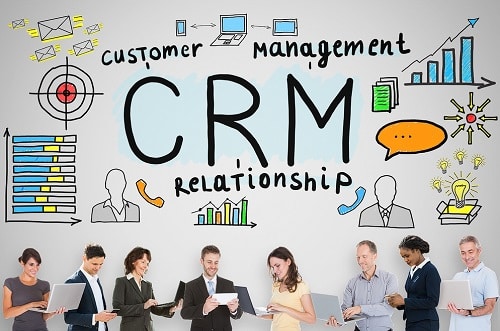CRM (Customer Relationship Management) is a software system that allows businesses to manage and analyze their interactions with customers and potential customers. By keeping track of customer data and interactions, businesses can better understand their customers’ needs and preferences, and tailor their marketing and sales efforts accordingly. In this article, we will provide an ultimate guide to CRM, covering everything from understanding the basics to maximizing the benefits and future trends.
Chapter 1: Understanding CRM
In this chapter, we will define CRM and explain its key features. We will also discuss the types of CRM systems available and highlight the benefits of using a CRM for your business.
Chapter 2: Choosing the Right CRM
Selecting the right CRM system is crucial for ensuring that it meets your business needs and aligns with your goals. This chapter will discuss the factors to consider when choosing a CRM, the popular CRM systems available in the market, and the pros and cons of each CRM.
Chapter 3: Implementing Your CRM
Successfully implementing a CRM requires careful planning and execution. This chapter will provide a step-by-step guide to implementing a CRM, best practices for integrating a CRM into your business, and common challenges that businesses face when implementing a CRM and how to overcome them.
Chapter 4: Maximizing the Benefits of Your CRM
A CRM system can provide a wealth of data and insights about your customers, but it’s important to know how to utilize it effectively. In this chapter, we will share tips for maximizing the benefits of your CRM, personalizing the customer experience, and analyzing data to make informed decisions.
Chapter 5: Maintaining and Upgrading Your CRM
To ensure that your CRM continues to provide value to your business, it’s important to regularly maintain and upgrade it. This chapter will discuss the importance of regular maintenance and upgrades, how to troubleshoot common issues with a CRM, and future trends in CRM technology.
Conclusion
In conclusion, CRM is an essential tool for businesses looking to improve their customer interactions, streamline their sales and marketing efforts, and make data-driven decisions. By understanding the basics of CRM, selecting the right system, successfully implementing it, and maximizing its benefits, businesses can gain a competitive advantage and increase customer satisfaction.
Whether you’re a small business owner or a large corporation, CRM can help you better understand your customers and improve your bottom line. By following the tips and best practices outlined in this guide, you can ensure that your CRM investment is a success.
FAQ
- What is CRM? CRM stands for Customer Relationship Management, which is a software system that allows businesses to manage and analyze their interactions with customers and potential customers.
- What are the benefits of using a CRM? The benefits of using a CRM include improved customer relationships, streamlined sales and marketing efforts, personalized customer experiences, and data-driven decision making.
- What are the types of CRM systems? The types of CRM systems include operational, analytical, and collaborative CRM.
- How do I choose the right CRM for my business? To choose the right CRM for your business, consider factors such as your business size, budget, and specific needs. You should also research popular CRM systems in the market and compare their features and pricing.
- What are the best practices for implementing a CRM? The best practices for implementing a CRM include setting clear goals, involving all stakeholders in the process, providing adequate training and support, and regularly reviewing and adjusting the system as needed.
- How can I maximize the benefits of my CRM? To maximize the benefits of your CRM, personalize the customer experience, regularly analyze data and make informed decisions, and use the system to streamline your sales and marketing efforts.
- What are the common challenges of implementing a CRM and how can I overcome them? Common challenges of implementing a CRM include resistance to change, lack of user adoption, and data quality issues. To overcome these challenges, involve all stakeholders in the process, provide adequate training and support, and regularly review and adjust the system as needed.
- How do I troubleshoot common issues with my CRM? To troubleshoot common issues with your CRM, start by identifying the problem and its root cause. Then, work with your CRM provider or IT department to implement a solution.
- Why is it important to regularly maintain and upgrade my CRM? Regular maintenance and upgrades ensure that your CRM is functioning optimally and providing value to your business. It also helps to prevent data loss or corruption and ensures that your system is up-to-date with the latest security features.
-
What are the future trends in CRM technology? Future trends in CRM technology include the use of artificial intelligence and machine learning to personalize customer experiences and automate routine tasks, as well as the integration of social media and messaging platforms into CRM systems.
